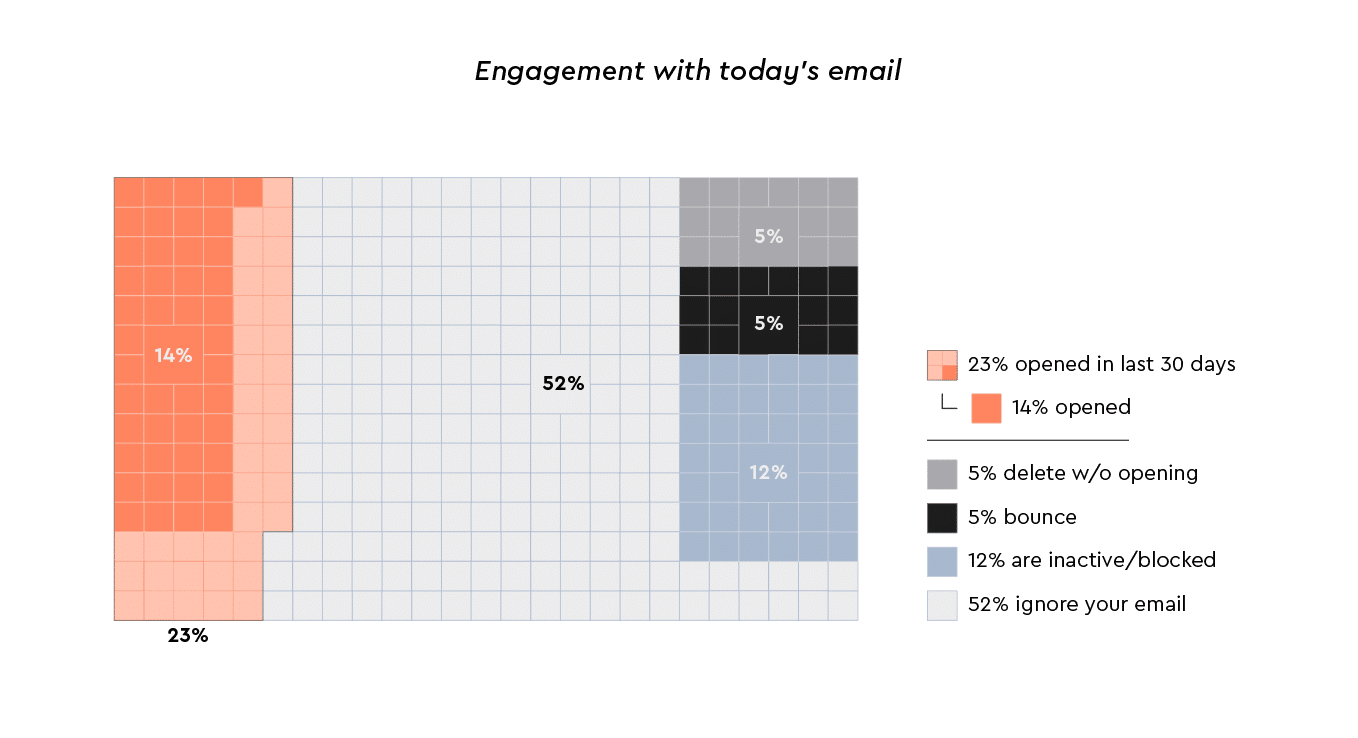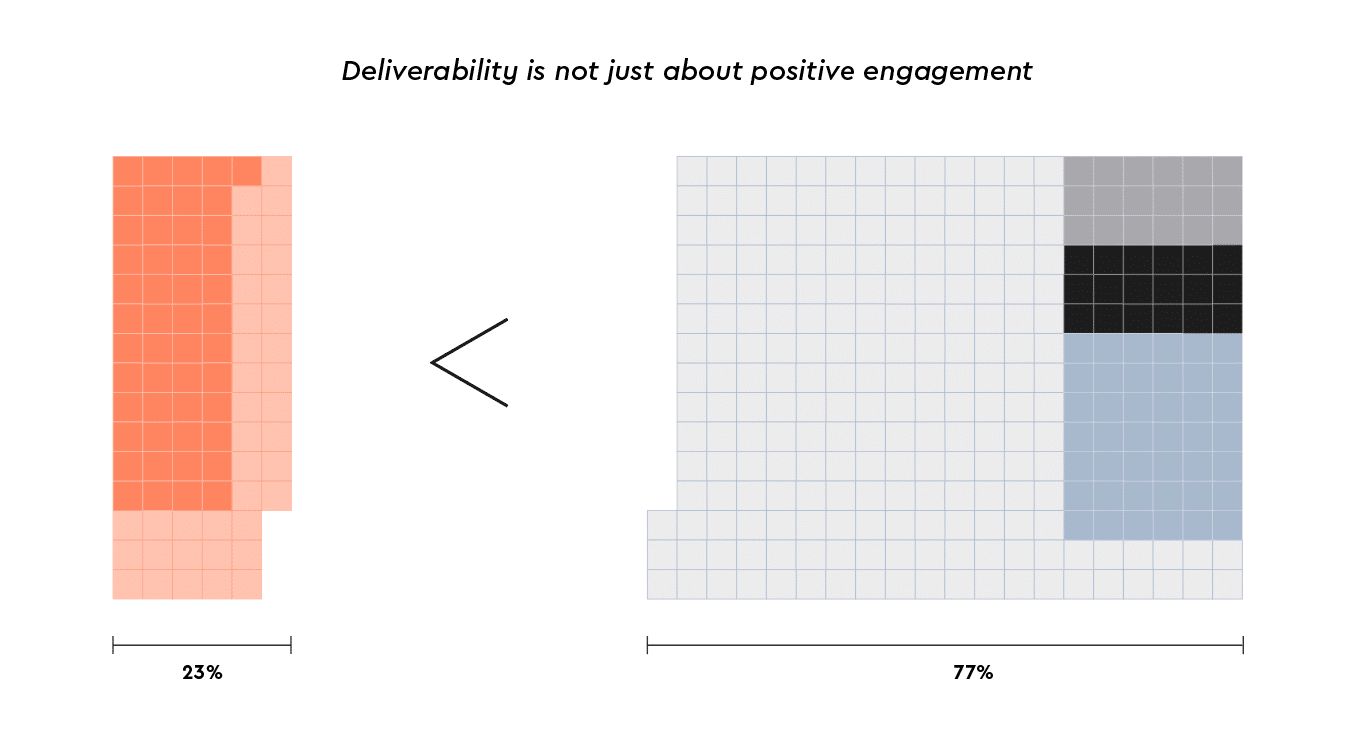
AI and the Retail Marketer’s Future
How AI transforms strategy and processes, driving the adoption of Positionless Marketing
Exclusive Forrester Report on AI in Marketing
Ensuring email deliverability is essential to the success of your upcoming holiday campaigns. This blog post highlights the main factors that impact deliverability so you can optimize performance.
The holiday season is approaching, and marketers worldwide are gearing up for their campaigns. This usually involves a strategy of increasing send volumes and frequency. But does sending more emails, more often, really drive results?
Internet service providers (ISPs) actually penalize high-frequency strategies, which can lead to your emails being marked as spam or blocked and not reaching your target audience.
That’s why mastering the rules of email deliverability is crucial to making sure your messages reach the inbox—and your customers.
Deliverability and delivery are distinct metrics. Email delivery measures whether an ISP accepted your email, but it doesn’t indicate where it landed—in the inbox, spam, or junk folder—only if it bounced or not.
Deliverability, however, tracks whether the email reached the inbox, which affects open rates, engagement, conversions, and ultimately campaign return on investment (ROI).
The importance of engagement to deliverability cannot be overstated. This is because the ISP’s evaluation of engagement determines deliverability.
If they detect low engagement or that your emails are unwanted, they’re less likely to deliver them to the inbox.
The main factors that go into the consideration include:
You’ve sent an email to your target audience with a couple of personalization tags to boost engagement potential. Your open rate is 14%. Does this indicate strong engagement?
Not necessarily. Open rates alone don't determine how ISPs view engagement (and impact deliverability). The calculation is more complicated, taking into consideration both positive and negative engagement metrics.
Negative actions such as deleting without opening, bouncing, inactivity, and non-engagement over a period of time also impact deliverability.
While 14% may seem strong, deliverability has been negatively impacted because the ISP also noted that:

*Some charts may not add up to 100% due to rounding
While some recipients opened and engaged with today’s email, a significant portion of the target audience has taken negative actions.
This will harm the deliverability of future emails. And this is why assessing both positive and negative engagement factors is paramount.

Overwhelming subscribers with too many messages can lead to disengagement and cause ISPs to flag your messages as spam.
When building your campaign strategy for the holidays (or at any time of the year, for that matter), it is essential to first recognize whether you have a deliverability issue.
So, before you finalize the plan for your 2024 holiday campaign, be sure to check out our next post in this series. We’ll cover the four warning signs of a deliverability issue, along with the positive and negative engagement signals that every email marketer should watch for.
In the meantime, to learn how Optimove can help you improve deliverability rates and increase user engagement, contact us to request a demo.
Exclusive Forrester Report on AI in Marketing
In this proprietary Forrester report, learn how global marketers use AI and Positionless Marketing to streamline workflows and increase relevance.


Writers in the Optimove Team include marketing, R&D, product, data science, customer success, and technology experts who were instrumental in the creation of Positionless Marketing, a movement enabling marketers to do anything, and be everything.
Optimove’s leaders’ diverse expertise and real-world experience provide expert commentary and insight into proven and leading-edge marketing practices and trends.


